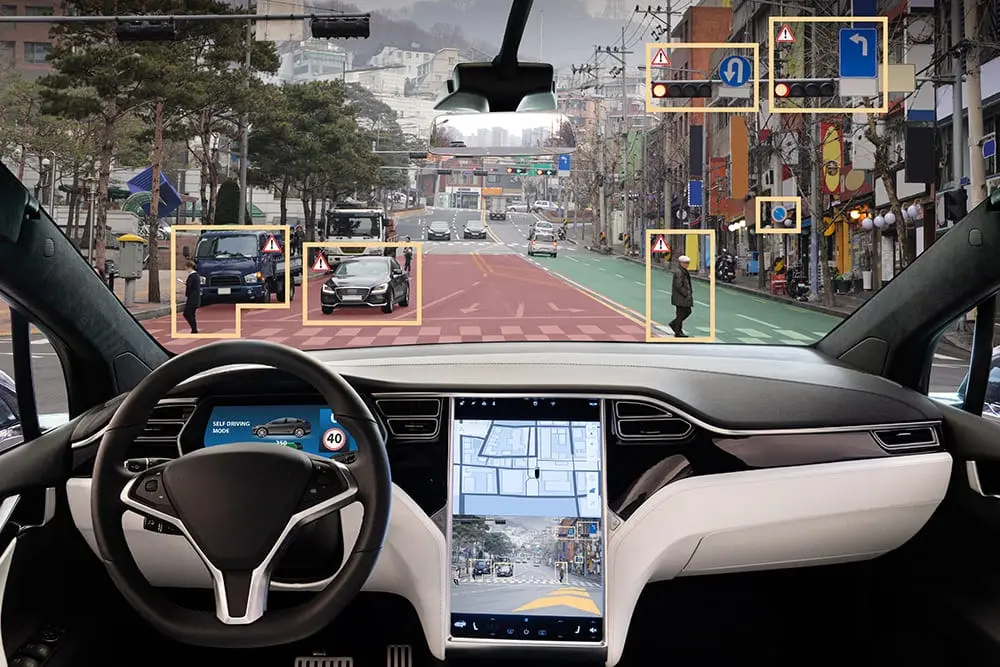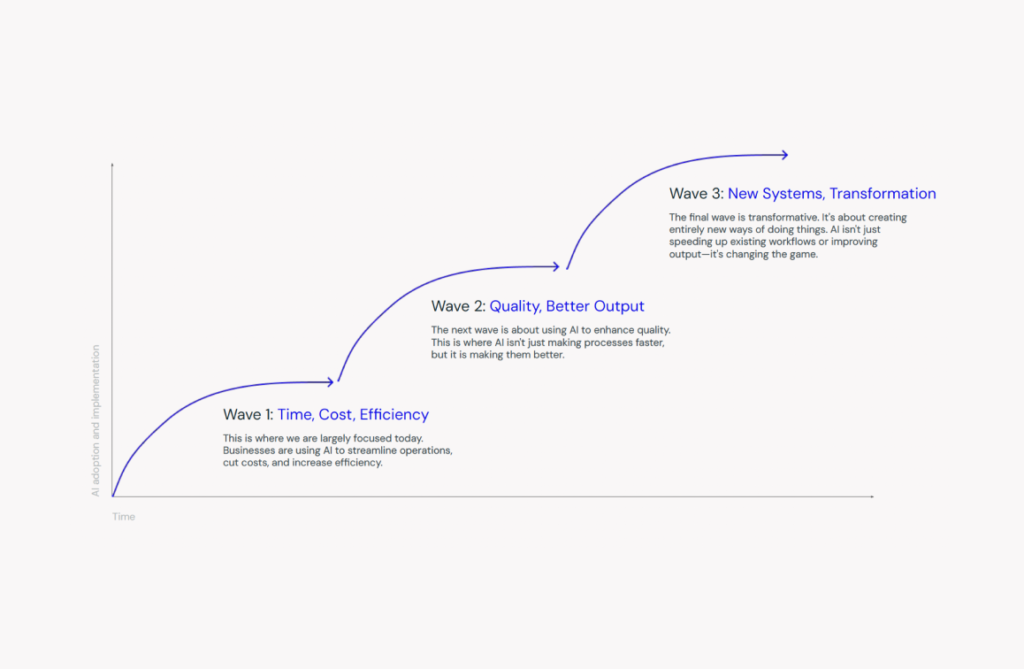Back to all insights
3 archetypes: how companies approach AI adoption
Laura Stevens
Managing Director of Data & AI
As organizations navigate the AI revolution, we see three distinct AI adoption archetypes emerging. Each represents a different approach to leveraging AI, whether as a growth engine, an enterprise-wide transformation enabler, or a deep functional enhancement.
1. Outward AI: AI as a revenue generator (AI as a product/service)
These companies place AI front & center in their business or operating model, using it as a core differentiator/growth driver. AI isn’t just a supporting tool, it’s a core product or a revenue enabler.
Characteristics
Examples of AI as a revenue generator

Spotify
AI-driven personalized playlists and audio discovery models directly impact engagement and subscription revenue.

Tesla
AI-powered autonomous driving as a central value proposition.

OpenAI
AI-based GPT models offered as a core product.

Netflix
AI-powered content recommendation drives customer retention and revenue.
2. Holistic AI: AI as an enterprise-wide transformation engine
Organizations in this category view AI as a cross-functional enabler, embedding it across all business units and operations to drive efficiency, resilience, and decision-making.
Characteristics
Examples of AI as an enterprise-wide transformation engine

Walmart
AI-driven supply chain optimization, inventory management, and dynamic pricing.

Amazon
AI integrated across logistics, personalization, fraud detection, fulfillment centers.

Shell
AI-powered predictive maintenance, drilling optimizations, energy efficiency initiatives.

Unilever
AI adoption across marketing, R&D, and sustainable sourcing.
3. Deep AI: AI embedded in a specific domain
Rather than applying AI broadly, these companies go deep, embedding AI into one key function or business area where it can drive maximum impact.
Characteristics
Examples of AI embedded in a specific domain

Klarna
AI-powered customer service automation, using AI chatbots and predictive insights to enhance user experience.

John Deere
AI-driven precision agriculture, optimizing crop yields with machine learning.

Starbucks
AI-powered loyalty program personalization and real-time menu adjustments.

Lufthansa
AI in customer support and flight disruption management.
Why archetypes matters (and the relevance of different AI approaches)
As AI adoption accelerates, organizations face a critical choice: How will AI shape their future business model and operations? The three AI archetypes – Outward, Holistic, and Deep – provide a strategic lens to help companies clarify their AI ambitions, align investments, and make informed decisions about where and how AI should drive value.
1. Strategic clarity: Matching AI ambition to business goals
Understanding these AI archetypes helps companies answer key strategic questions:
Is AI a core revenue driver (Outward AI)?Should AI be embedded across all functions to enhance decision-making and resilience (Holistic AI)?Is the best approach to specialize AI in a specific domain for maximum impact (Deep AI)?
By defining an AI archetype early, organizations can ensure that AI adoption is purpose-driven, not just exploratory.
2. Investment & prioritization: Where to focus resources
Without a clear AI strategy, companies risk spreading resources too thin or investing in AI without clear ROI expectations.
3. Operating model alignment: Structuring AI for impact
Each archetype requires different organizational capabilities, governance structures, and AI talent strategies:
Outward AI needs strong AI innovation teams, product managers, and scalable AI infrastructure.Holistic AI requires a company-wide AI governance framework and cross-functional collaboration.Deep AI demands deep expertise in one domain, ensuring seamless AI integration into workflows.
Without a structured AI operating model, even the best AI strategies may fail to scale.
4. Competitive differentiation: AI as a market advantage
AI is becoming a key differentiator in nearly every industry.
Outward AI companies gain a competitive edge by launching AI-powered products/services before competitors.Holistic AI adopters win through faster, data-driven decision-making and operational resilience.Deep AI organizations create best-in-class AI-driven experiences in their focus area (e.g., Klarna in customer service).
A misaligned AI strategy could mean falling behind industry leaders who use AI more effectively.
5. AI scalability & long-term success
Some companies start with Deep AI and later evolve into a Holistic AI approach.Others start with Outward AI innovation, then expand AI across internal functions.
Having a clear AI archetype helps organizations plan for future AI expansion, ensuring that today’s investments align with long-term AI maturity.
Key takeaways
Let’s talk about how you structure your AI adoption.

Laura Stevens
Managing Director of Data & AI
Laura Stevens, PhD, is the Managing Director of Data & AI, bringing a unique blend of strategic vision, analytical expertise, and leadership acumen. With a background in neuropsychology, business consulting and organizational transformation, she has successfully navigated a career spanning academia, consulting, and industry leadership. As a former VP Data & AI in an international organization, Laura has led large-scale Data & AI teams covering data science, machine learning, data engineering, data governance, and visualization. She is passionate about leading organizations through their data & AI transformation.
laura.stevens@boardofinnovation.com
More resources on AI driven growth

Executing AI strategy – how to break through bottlenecks

The Three Waves of AI Adoption Framework

AI Strategy Playbook
The post 3 Archetypes: how companies approach AI adoption appeared first on BOI (Board of Innovation).




